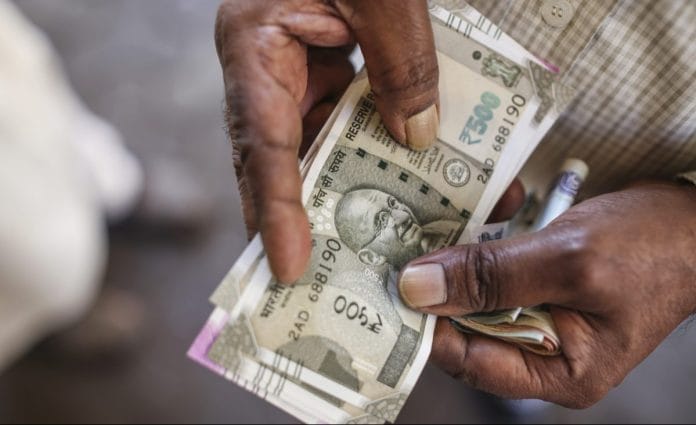Issuance of recapitalisation bonds didn’t increase fiscal deficit, but led to a jump in government liabilities to Rs 77.98 lakh crore.
New Delhi: Infusing capital in state-run banks using recapitalisation bonds in 2017-18 increased the total central government debt in both absolute terms and as a percentage of GDP that fiscal, a status paper on government debt issued by the Centre late Friday showed.
The issuance of these bonds didn’t increase the fiscal deficit, but it led to a jump in total liabilities of the central government to Rs 77.98 lakh crore in 2017-18, up from Rs 70.07 lakh crore in the year-ago period, said the report.
As a percentage of GDP too, total central government liabilities increased to 46.5 per cent from 45.9 per cent from a year ago — a 0.6 percentage points jump.
This ratio had been falling continuously over the last few years and increased for the first time in 2017-18.
The government had used recapitalisation bonds along with direct capitalisation to infuse funds into state-owned banks that were struggling to meet the regulatory capital requirements.
In 2017-18, Rs 80,000 crore of recapitalisation bonds were used to fund state-run banks.
In the current fiscal, the government has budgeted to infuse more than Rs 1 lakh crore through recapitalisation bonds. This, along with the interest payments due on these bonds, will further add to government’s liability.
The general government liabilities, which include state government liabilities, also rose to 68.2 per cent of GDP in 2017-18 from 67.5 per cent of GDP in 2016-17. This ratio had also fallen the previous fiscal.
External debt as a percentage of GDP also rose to 2.9 per cent in fiscal 2018 from 2.7 per cent in the year-ago period. It constituted 7 per cent of total public debt as of end-March 2018.
Also read: Behind Rupee meltdown: India’s exports disaster under Modi Govt
Debt risks
Low share of external debt in total debt portfolio insulates the sovereign debt from currency risks. However, external debt can be a cheaper source of funds and can reduce the overall interest burden of the government, the report said.
However, the risks associated with it need to be analysed before taking any final decision in the matter, it said.
It added that the government is continuing with its efforts to elongate the maturity profile of its debt portfolio with a view to reduce the roll-over risk.
However, residual maturity of outstanding government securities at end-March 2018 was 10.62 years on an average, slightly lower than the 10.65 years in the year-ago period.
The report added that only 26.1 per cent of outstanding stock of dated government securities had a residual maturity of up to 5 years.
This indicates a relatively lower roll-over risk in medium-term, which is further supported by active debt management operations in terms of switches and buybacks, the report added.
Also read: India has met its disinvestment target only once in the last 10 years







The next FM will have to sit with his mandarins and advisers and face something akin to a 1991 moment. Not as stark in some respects, for the economy has grown in the last three decades. However, public finances are on an unsustainable path. There is talk of a one trillion bazooka that is being readied. The states are equally stretched. Whatever the composition of the next government, coalition partners should settle on a technocratic FM – mirroring Dr Singh – and moderate their populism. One does not fear the political power play in the next government; these are senior, mature personages who have / are running important states, understand the art of the deal better than Donald Trump. It is the economy where they should not falter. Virtually every facet of the India growth story will have to be patiently rebuilt.